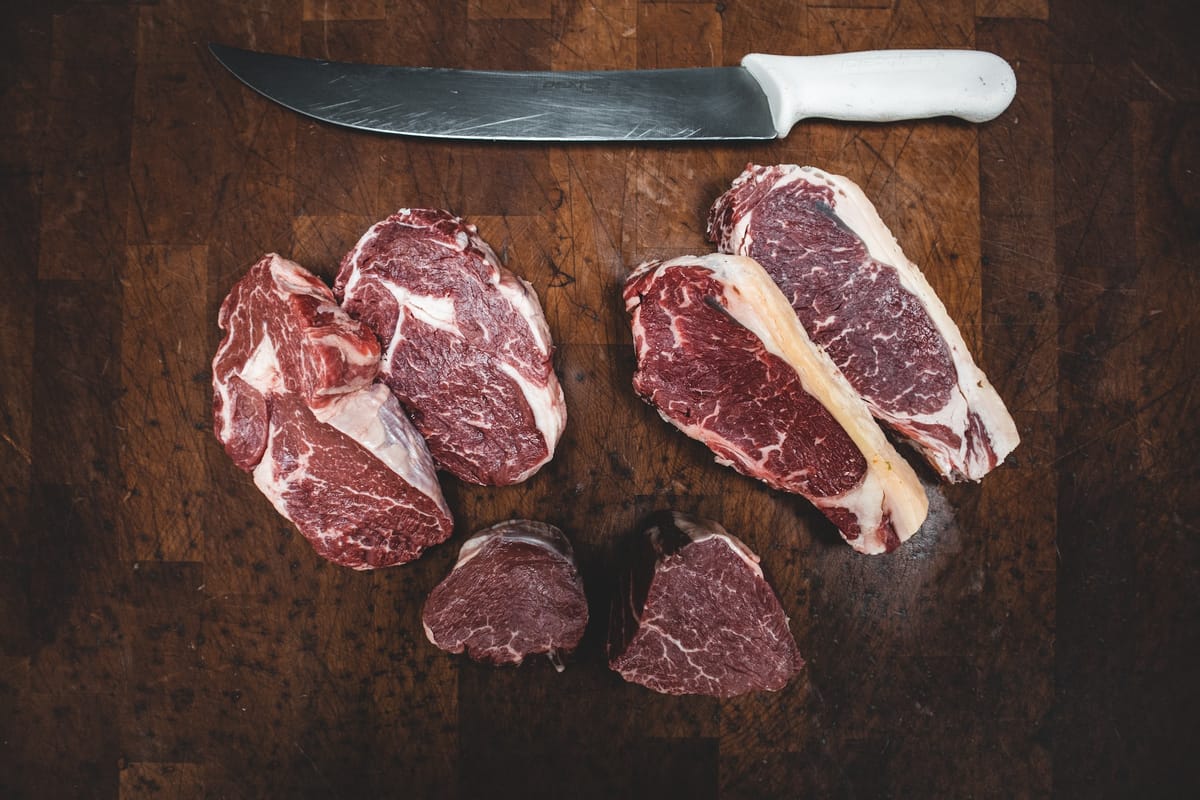The effects of grass-fed beef on palate and pocketbook

The high-points:
- Grass-feeding cattle is a common management style in many parts of the US, including producers selling to specialty food markets.
- The higher growth potential animals, entirely grass-fed, had larger ribeye areas but less marbling.
- Corn-supplemented cattle had brighter and redder meat but, conversely, yellow fat, likely because they were on grass longer.
What you need to know: Most of us have heard of grass-fed cattle, as well as grass-fed, grain-finished cattle. This management style is common practice in many parts of the US, including producers selling to specialty food markets. This is also a common practice in Brazil, where today's research comes from. Grass-fed cattle often have less intramuscular fat and discoloration of their fat and muscle. These differences can affect the marketability of the final product and, in turn, limit the price a producer can receive for their animals. Additionally, animals with less growth potential (i.e., poor genetics) can take longer to reach an adequate weight and finish for slaughter in a grass-fed system.
Today's paper was unique, as it studied the differences in grass-fed and grass-fed, grain-finished steers at various steps of beef production. Steers were fed out on grass pastures until the first half were large and fat enough for slaughter; these would be the higher growth potential animals. They then provided supplemental corn grain to the remaining steers, the lower growth potential animals, until they were heavy and fat enough for slaughter. Because of this, at the time of slaughter, each animal was roughly the same weight.
However, the carcasses of these animals were different. The higher growth potential animals, which were entirely grass-fed, had larger ribeye areas but had less marbling and dressing percentage when compared to those that received grain. Additionally, the higher growth potential group reached slaughter weight 68 days sooner, suggesting greater feed conversion.
Finally, onto the meat and potatoes of this research (pun intended). The researchers found differences in meat color and quality of the two treatments. The corn-supplemented cattle had brighter and redder meat but yellow fat, likely because they were on grass longer. Using consumer panels, they asked participants to rate the meat for flavor, aromas, and tenderness, with the consumer panel preferring the corn-supplemented product.
Important to note:
- The animals in this study were not evaluated for genetic merit to compare their propensity for growth and feed conversion. Although it was a fair assessment that the slower-growing animals were lower performing, I would like to have seen genetic evaluations to back up these assumptions. There could be other factors that were at play, like sickness, injuries, or stress.
- There was not a group fed supplemental corn grain for the entirety of the study, and I would have liked to see a comparison between the grass-fed and a grain-finihsed group for the same number of days.
Industry application: Do not underestimate the benefit of backgrounding or fattening cattle with greater growth potential (i.e., better genetics). The potential difference in performance could decrease the cost of feeding an animal, both by decreasing days on feed and increasing feed efficiency. Also, corn-finishing cattle can significantly improve an animal's meat quality and consumer preference, even when supplemented for the last 60 to 70 days.
Read more about it: Carcass and meat quality of young Angus steers with different growth potential finished exclusively grass-fed or corn supplemented.
